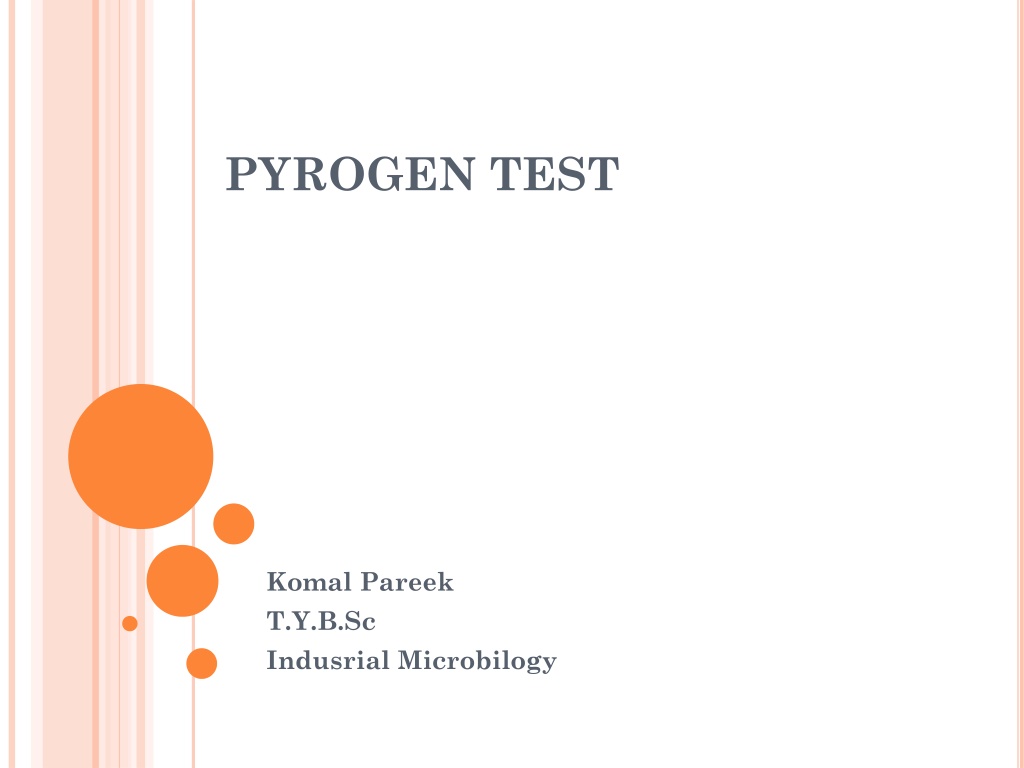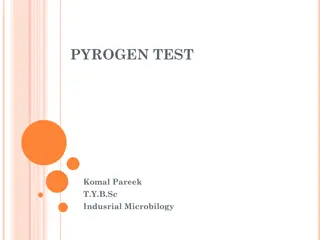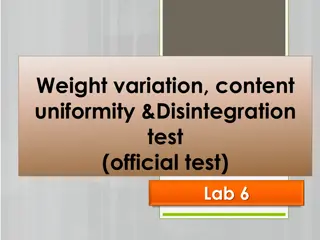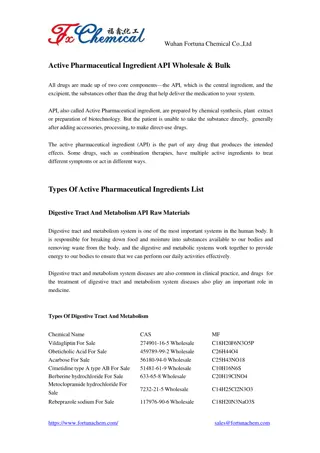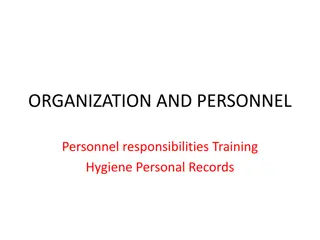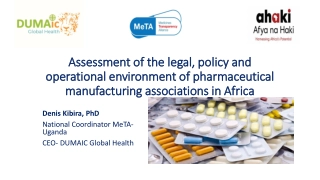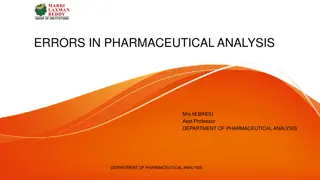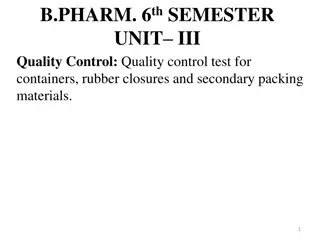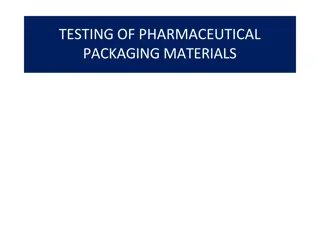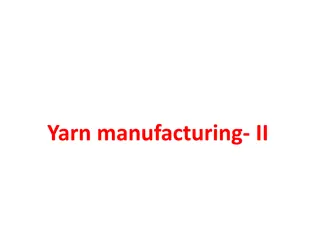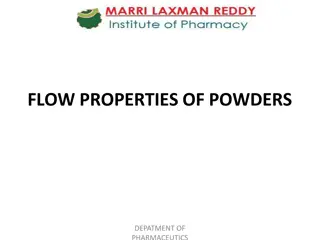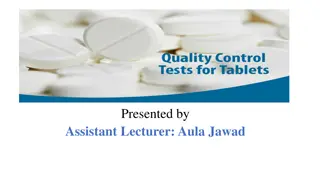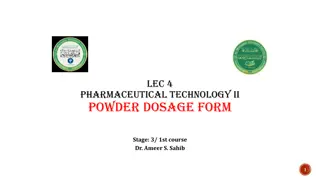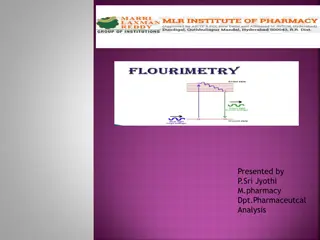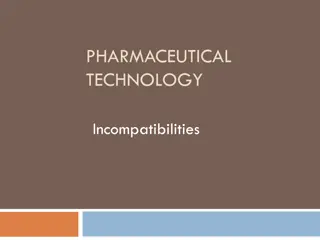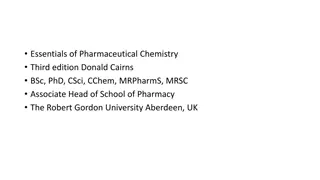Understanding Pyrogen Testing in Pharmaceutical Manufacturing
Pyrogen testing plays a crucial role in ensuring the safety of vaccines and drugs by detecting the presence of bacterial toxins that may cause fever in humans. The process involves various methods such as rabbit pyrogen testing and human response evaluation to safeguard against pyrogen contamination in injectable pharmaceuticals. Early detection of endotoxins is essential in the production process to prevent potential risks to human health.
Download Presentation

Please find below an Image/Link to download the presentation.
The content on the website is provided AS IS for your information and personal use only. It may not be sold, licensed, or shared on other websites without obtaining consent from the author. Download presentation by click this link. If you encounter any issues during the download, it is possible that the publisher has removed the file from their server.
E N D
Presentation Transcript
PYROGEN TEST Komal Pareek T.Y.B.Sc Indusrial Microbilogy
PYROGEN TEST PYROGEN: A CHEMICAL WHICH AFFECTS THE HYPOTHALAMUS, WHICH REGULATES THE BODY TEMPERATURE.
PYROGENICITY Ability to cause a change in body temperature In humans endotoxins cause an increase in temperature which is a fever response. Pyrogenic effect is indirect: the active chemical agent that causes the temperature change is an endogenous pyrogen that is released from blood leucocytes under the influence of endotoxins. This pyrogen affects the hypothalamus of the brain which regulates body temperature.
PYROGEN TEST Pyrogen test defines a process used by drug manufactures to determine if bacteria toxins are present in vaccines and drugs that might cause fever when used on humans. It determines if microbes or their metabolites are present in intravenous solutions during the manufacturing process.
RABBIT PYROGEN TEST The most common and oldest form of pyrogen testing consists of injection of drugs into rabbits to determine if a fever develops. The rabbit pyrogen testing method surfaced in the 1940 s after some patients became ill from intravenous drugs. The rabbit pyrogen test is commonly conducted for detecting possible pyrogen contamination in injectable pharmaceuticals.
HUMAN RESPONSE TO PYROGEN The human body fights exposure to bacterial toxins in the environment through the skin. When contaminated drugs are injected into the bloodstream, toxins bypass normal defense mechanisms. WBC s begin releasing another form of pyrogen that causes high fever which might lead to shock and death.
PYROGEN TEST IN PRODUCTION PROCESS As virtually all raw materials involved in a production process, including factory employees can be potential sources of pyrogen contamination in injectable pharmaceuticals. Hence raw material screening is an important step in any standard quality control procedure. In this context early endotoxin detection was accomplished by injecting rabbits with the sample and observing the response in their body temperature.
REASONS FOR CHOOSING THIS TEST: Rabbits have similar endotoxin tolerance to humans. Contrary to LAL test, rabbit pyrogen test is sensible to a wide variety of pyrogenic materials. FOR NOT CHOOSING THE TEST: Costly and time consuming method. Unable to quantify endotoxin level.
